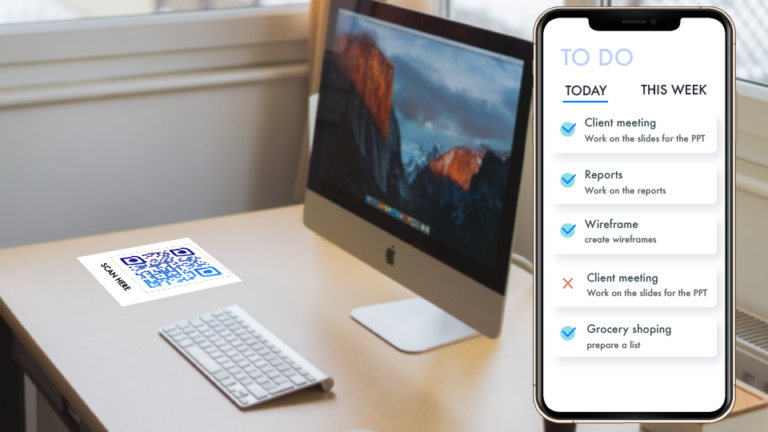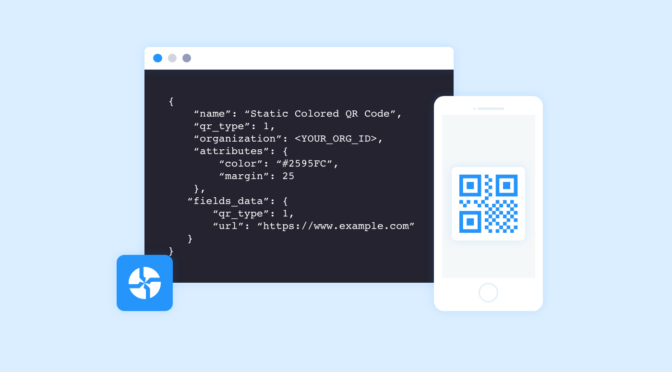Managing your daily workflow presents a challenge to many professionals in all industries.
There is no one answer to combating low productivity and it differs depending on your job. However, there are a few broad trends that determine the effectiveness of your workflow.
In this article I’ll give you the following three tips to help you improve your strategy and get more out of each day:
- Maintain a good lifestyle
- Use the right tools
- Put processes in place
Let’s look at these simple, but effective, tips in more detail.

Productivity tip #1: Look after yourself and you’ll look after your work
The first and most obvious step is to look at the kind of behaviors your daily routine is couched in.
When we talk about our daily workflows we’re normally talking about our professional lives. However, our professional lives are a smaller part of a bigger picture. If you want to be successful in work you need to look after yourself as a person.
If you’re into football (soccer), you’ll see a consistent trend across different top managers. Both Sir Alex Ferguson and Brian Clough would encourage their players to get married at a very early age. They felt that having their players settle down made them better professionals. Something about having a consistent home life and kids to factor into their daily routine helped make the players more consistent in their approach to work and daily performance.
If you don’t have kids, I’m not advocating that you should do so simply to gain consistency. But, you should appreciate the benefits of a healthy diet and a good night’s sleep – something a lack of kids will help with.
Simple tasks like drinking a lot of water and eating carbohydrate-rich foods at lunch can make surprising differences to your productivity. If you’re struggling to maintain a daily workflow, the first step is to look at the environment you expect that workflow to exist in and to ask yourself whether that environment is conducive to a good workflow.
It will be hard to work well if you eat crap all the time. If you struggle with daily to-dos, create a dynamic QR Code that can be updated daily and link it to a checklist of tasks you have to accomplish.
Productivity tip #2: Use the right tools and your workflow will thank you
There are a series of tools that can help you get more done.
Partly, this depends on whether you are self-employed or whether you rely on the input of others such as a virtual assistant to get your work done.
If you generally work alone – lucky you – your first step, before tackling the kind of time management and process management we’ll come to later, is to find ways to improve your productivity. When I used to work in a sales position, I found that productivity techniques like the Pomodoro method were very useful for improving my flow. You can also use a small business CRM software or MDM software to effectively manage your workflow and to increase productivity. If you’re working in finance for instance, there’s a number of accounting tools to simplify your day to day activities by taking over mundane tasks. Additionally, using a daily planner into your routine can provide structure and organization to your tasks, helping you prioritize and manage your time efficiently.
Try the Pomodoro technique to keep you focused
The Pomodoro technique involves 25 minutes of work with a 5-minute break. If you’re a real evangelist, you will stick to this structure no matter what. Maybe you’re sending the most important email of your life and suddenly the timer goes off. The Pomodoro hardcore-subscriber would stop writing the email and take a 5-minute break.
This kind of structured approach is great if you’re working in a reaction-based environment like sales. It both primes you to get your best work done and forces you to take breaks and not get too obsessed. When taking a break, you can even do fun quick activities like play Spider Solitaire or solve a jigsaw puzzle, which can help you further mentally refresh and improve your productivity.
However, it is not massively useful when you’re working as a writer. When you have a window in which you want to write an article, you often spend a lot of time not getting all of your writing done and then find a short burst of beauty where all the ideas come to you and you become a master wordsmith. Moreover, students that have writing tasks can use Caktus essay maker to ensure their work is well-crafted.
Performance Management Tools
Performance management tools are software programs designed to help managers and teams monitor employee performance and track deferred compensation. These employee performance tracking tools can show which areas need more attention and which ones are performing well, making it easier to understand where improvements are needed. Leveraging performance appraisal software can streamline this process by providing data-driven insights, automating evaluations, and ensuring a fair and consistent assessment of employee performance.
One key function of these tools is to assist in supervisor performance evaluations. This means that supervisors can get clear feedback on how they are managing their teams. By integrating these tools into your daily workflow, you can continuously monitor how well tasks are being completed and how teams are progressing toward their objectives. This makes it much easier to make adjustments as needed, ensuring that everyone knows what they need to do to succeed.
Use focus apps to maintain concentration
Forcing yourself to take breaks in those moments of genius is not a good idea. A better tool for writers, and for everyone, is something like Focus@will. This fun little app provides you with a series of playlists that contain focus music; lyric-free tracks that tend to build and generate energy.
Many team members of mine swear by Focus@will and I also enjoy their services. For me, it’s useful for getting into the zone of working. Once I’m there, I then like to switch to silence in front of a window with the sun beaming in.
Each to their own.
Work with collaboration tools to get tasks done
Do you sometimes get to the end of the day and wonder what you’ve done? You swear you’ve been super busy, but it feels like you’ve achieved nothing?
For most people, a large part of the day is spent chasing people for answers, waiting for information from colleagues, and hustling the team for progress updates. Whether you’re office-based or working remotely in virtual work spaces (typically virtual business address), working with people can often seem counter-productive.
Especially if you work remotely which, due to the COVID-19 epidemic, you more than likely are.
Working in different countries across different time zones, or even working in different parts of the same country, can really put the breaks on your productivity. To make sure you don’t spend too much on one activity while dismissing the others, pair your free project management software with any of the best Mac time trackers available online.
Unless you have the right team collaboration tools in place.
From group discussions, file sharing to email analytics, there are tons of hybrid work tools out there that make team collaboration easier than ever.
In addition, there are tons of software which can help in remote working such as online video conferencing tools like Microsoft Voice and integrated ERP Software that can help different teams work together.
A proper work from home software can reduce stress levels and increase the overall happiness of your employees.
Use task management tools to manage workloads
Simple but effective project management tools like Trello software, Teamwork, Clickup Software or Asana, are incredibly useful for managing tasks. There are also plenty of other project management tools available. They are designed to help you manage your own workload while also enabling you to keep track of your team’s progress. You can also test out multiple Asana alternatives to see which one works best for you and your team. For example, platforms like Fyle can automate expense and receipt tracking tasks enabling employees to focus on more value adding tasks. ActiTIME, FactoHR, Toggl, My Hours, and many other solutions also allow team members to input their tasks and respective time spent to complete them. Due to this practice, the managers can analyze their productivity and workload that guides them to organize further project schedules. This helps people work together as it encourages transparency and means you don’t need to chase your team for.
Use communication tools to connect with your team
Using communication tools like Slack or Hipchat can help reduce the time spent trying to connect with your team. These communication tools allow you to communicate with people in real-time. It’s easy to send and receive messages, you can communicate within and across teams, you can mention one another on updates and host conversations, in context, around certain projects or tasks.
Use cloud storage tools to share information
Cloud storage tools are brilliant for safely storing files that can be accessed from any device in any location. Cloud file storage tools like GDrive, Internxt or OneDrive will improve efficiency and productivity by making the sharing of information quicker and easier. No more waiting for someone to send you the document you need, you can access it for yourself in the cloud. In case you decide to choose OneDrive to store and share your documents, a third-party Microsoft 365 backup solution is recommended to protect data stored on OneDrive, as Microsoft doesn’t provide OneDrive data backup feature. There are also independent cloud VPS hosting providers. These providers give you an entire virtual machine accessible from anywhere worldwide, so you can build your data management system and tailor it to your specifications.
Efficient, easy to use collaboration tools will keep teams on track, help people work together, and will boost your performance within a team. Also, ensure your business finances are in place.
If you want to see a breakdown of some of the best team tools, check out this video:
How you organize yourself to work within that team is a different matter.
Productivity tip #3: Make a process for everything you do more than twice
We have a system and a culture over at Process Street which is almost obnoxious in its ubiquity.
We love processes and adore the effectiveness of workflows which comes from them. This results in us making processes for any and every task. Our general rule is that you should make a process for anything you do more than twice. This way, you think about how best to do it and ensure that the path of best practice is followed every time in the future.
Having a daily checklist to follow means that you can restructure your learned behavior – in the context of daily workflows.
Normally a process takes what you currently know and makes sure it’s replicated. However, within a reorganizing of daily workflows, a process can be even more powerful.
By laying out step by step what you want to accomplish, you can define how you want to operate.
Are you spending too long at lunch? Are you reading your emails first thing in the morning? Are you wasting time going over and above the call of duty for research?
Whatever you’re doing, you can redefine it by creating a daily checklist or series of checklists to define your actions and ensure you follow them. If you want control over your daily schedule, this is the best way to guarantee that!
Check out this video to see how a daily checklist can supercharge your day:
Go forth and be productive!
It’s simple.
Make sure you’re helping yourself and your productivity by looking after yourself. I love McDonald’s as much as anyone – my office is next to and above one – but if you’re eating it every day and not sleeping well, you’re not going to get work done as well as you could.
Make sure you’re using the right tools to help maximize your productivity. Whether for team organization or personal productivity.
Make sure you build processes to define your daily workflows. If you add structure to your life and your actions, you’ll be much more likely to behave in the ways you want yourself to behave. If you feel overloaded with organization processes, it is time to find a convenient virtual assistant to help you in these procedures.
It’s that simple.
Ignore articles that tell you: “Learn This One Trick to Being 9736% More Productive”.
Reality is more simple and more based on repeating positive progress. Best of luck!
Ektha is a QR code expert with years of research and analysis into the evolution of QR codes. Having written over 70 in-depth articles on QR technology, she has developed a comprehensive understanding of how QR codes are transforming industries. Her insights, including The State of QR Report, have been featured in leading publications. With a passion for simplifying complex topics and providing actionable strategies, Ektha helps businesses leverage QR codes to enhance their ‘phygital’ connections.











